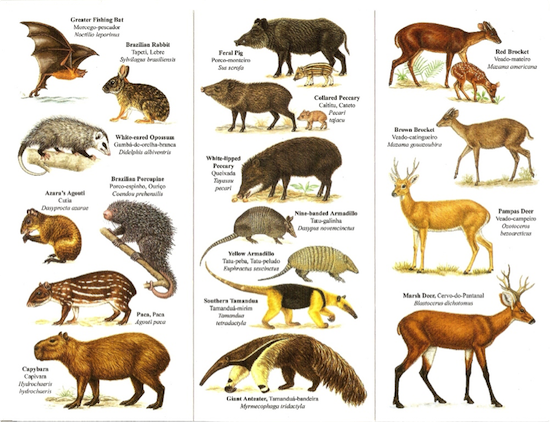
Mammalia Notes

Mammals belong to the class Mammalia and are a life-form group of endothermic [an organism that maintains its body at a metabolically favourable temperature] four-footed animals distinguished from reptiles and birds by the possession of hair, three middle ear bones, mammary glands, and a neocortex (a region of the brain). The mammalian brain regulates body temperature and the circulatory system, including a four-chambered heart. The mammals include the largest animals existing today, as well as some of the most intelligent, such as elephants, primates, whales, dolphins, and porpoises. The basic body type is a four-legged land-borne animal, but other mammals are adapted for life at sea, in the air, in the trees, or on two legs. The largest group of mammals, the placentals, have a placenta which feeds the offspring during pregnancy. Mammals range in size from the 30-40 mm bumblebee bat to the 33-metre blue whale.
Except for the five species of monotremes (egg-laying mammals), all modern mammals give birth to live young. Most mammals, including the six most species-rich orders, belong to the placental group. The three largest orders, in descending order, are Rodentia (mice, rats, porcupines, beavers, capybaras, and other gnawing mammals), Chiroptera (bats), and Soricomorpha (shrews, moles and solenodons). The next three largest orders, depending on the classification scheme used, are the primates (to which the human species belongs), the Cetartiodactyla (including the even-toed hoofed mammals and the whales), and the Carnivora (cats, dogs, weasels, bears, seals, and their relatives).
The early synapsid [the largest terrestrial dinosaurian vertebrates in the Permian period] mammalian ancestors were sphenacodont pelycosaurs, a group that also included Dimetrodon. At the end of the Carboniferous period (around 300 million years ago), this group diverged from the sauropsid dinosaur line that led to today's reptiles and birds. The first mammals then appeared in the early Mesozoic era. The modern mammalian orders arose in the early to middle Cenozoic Era, after the extinction of the non-avian dinosaurs 65 million years ago.